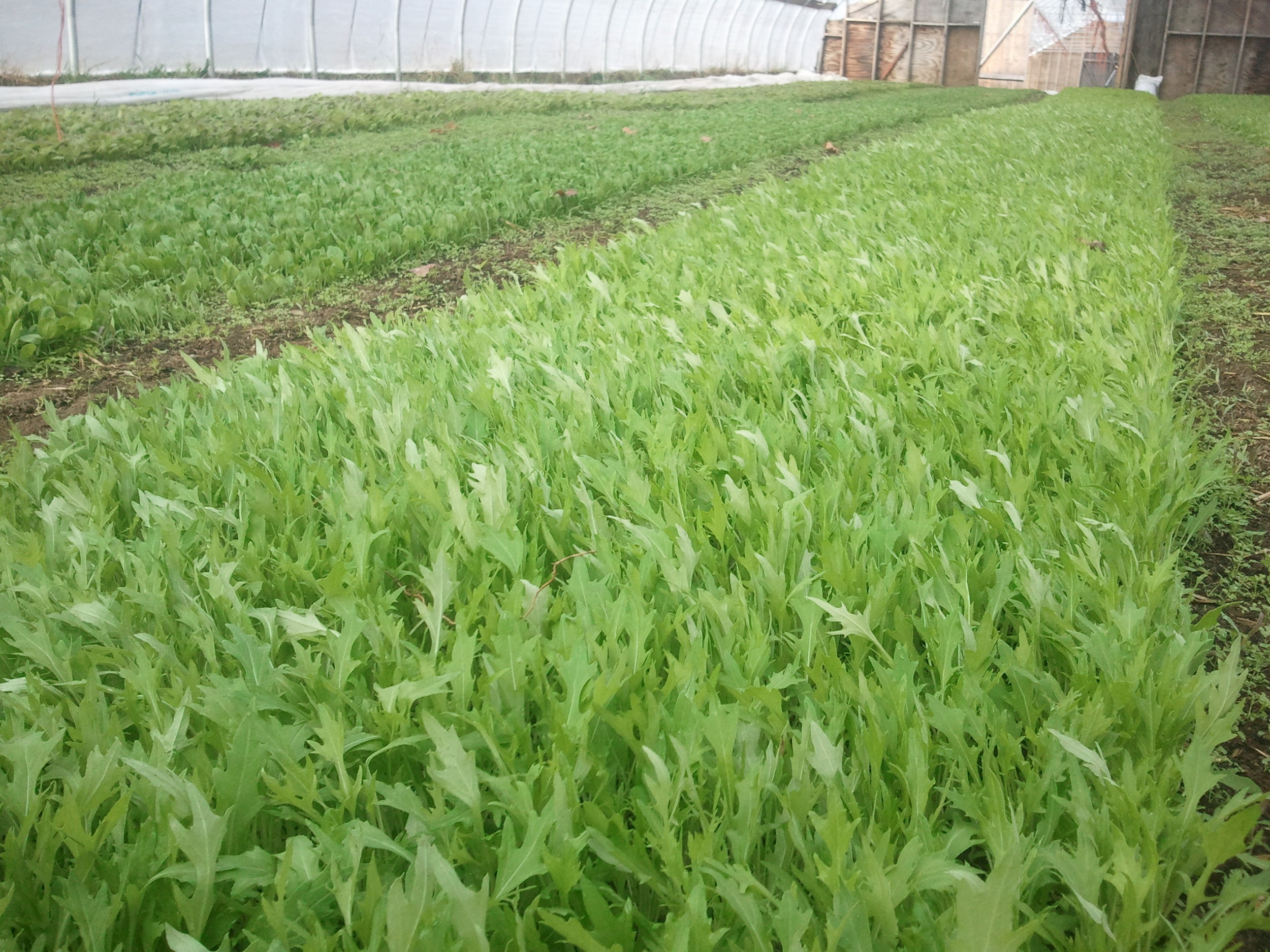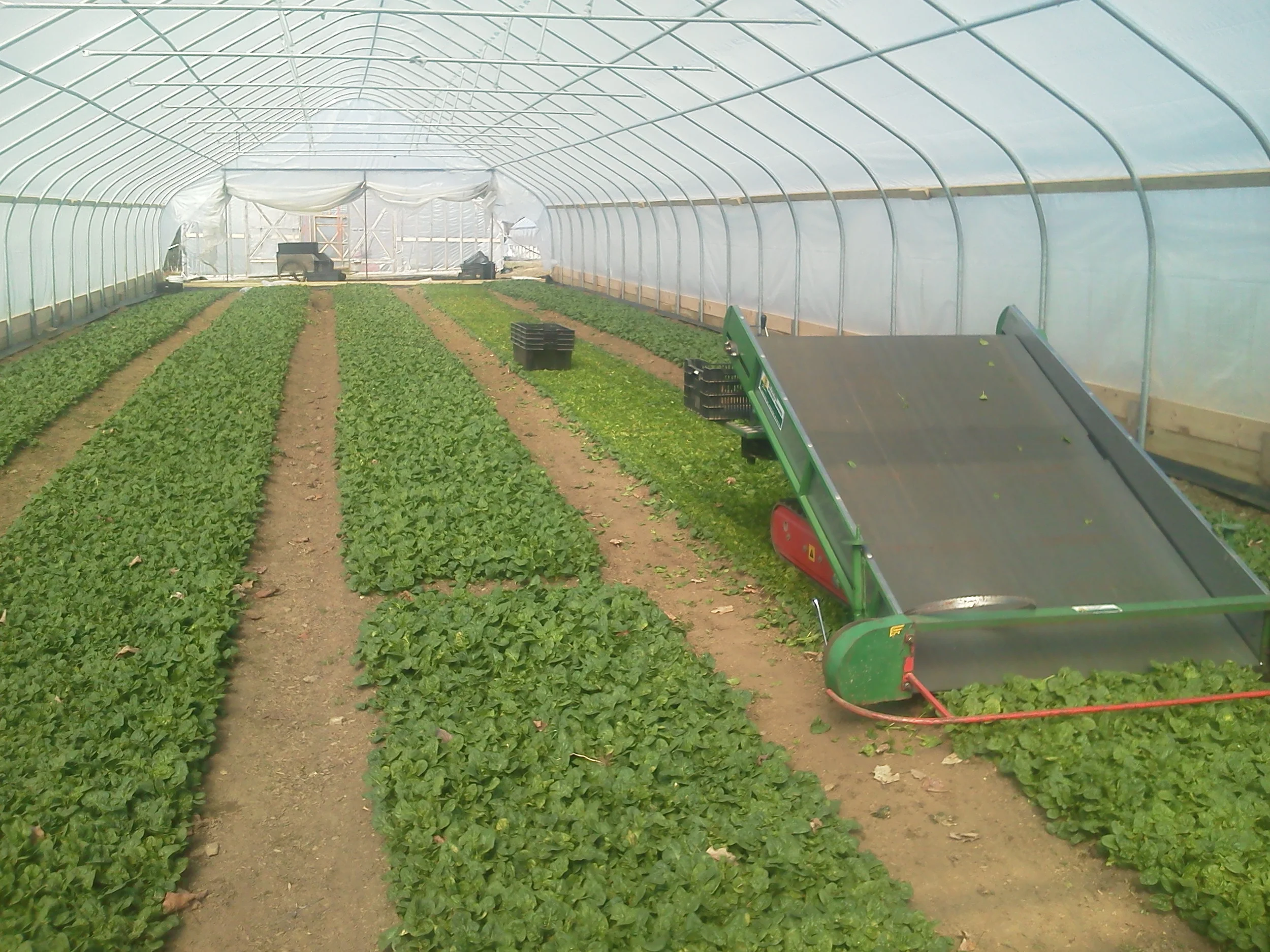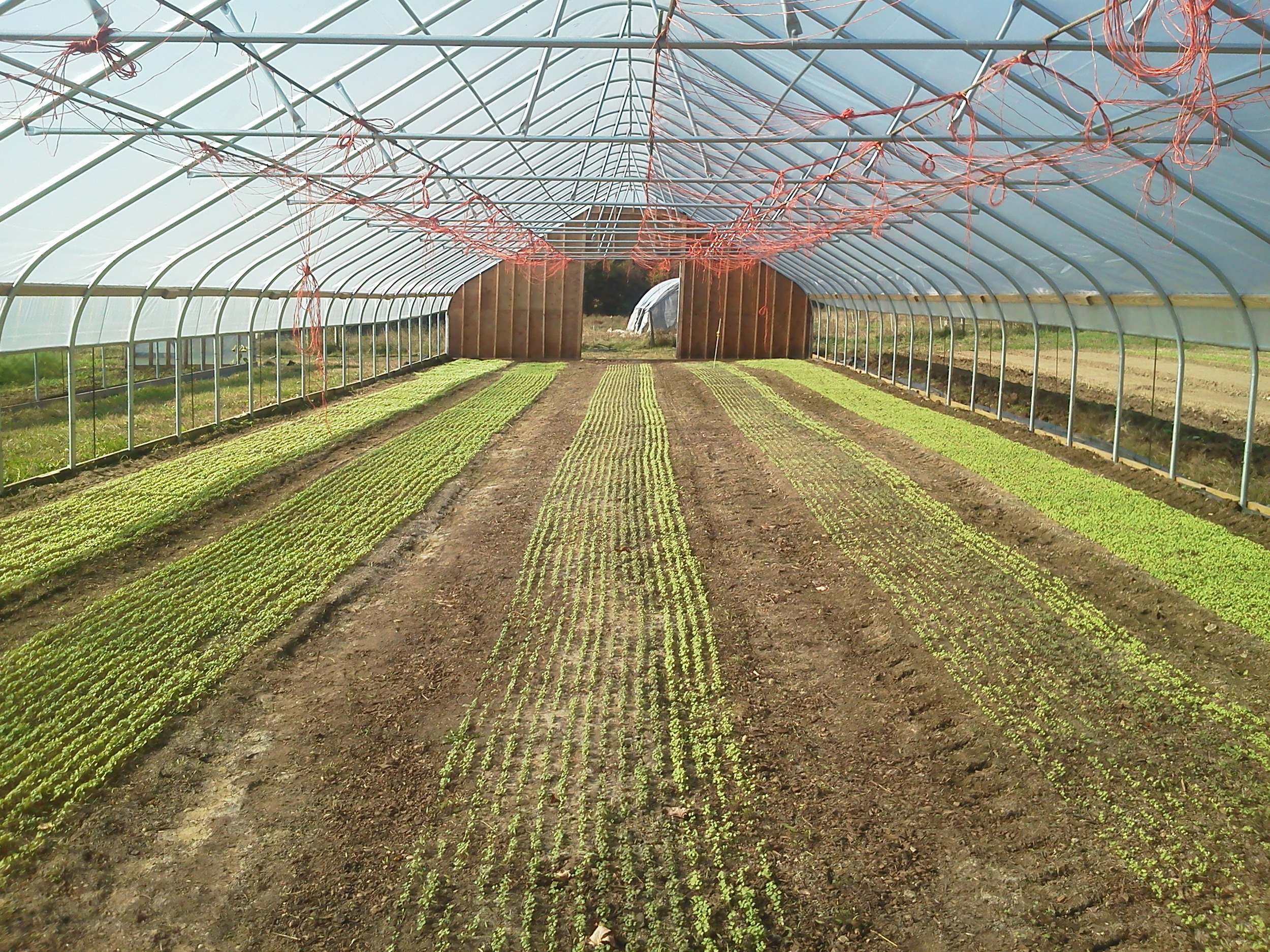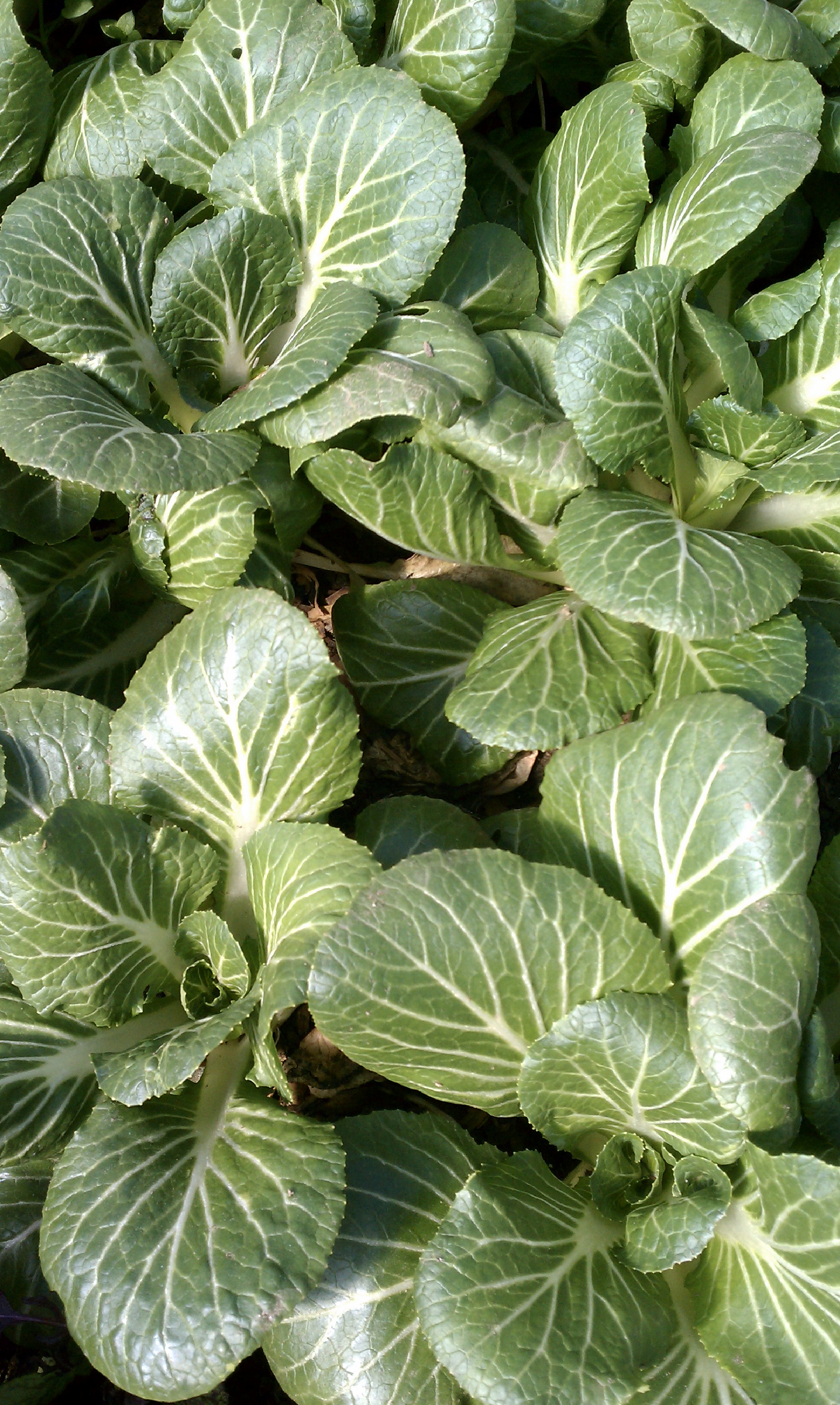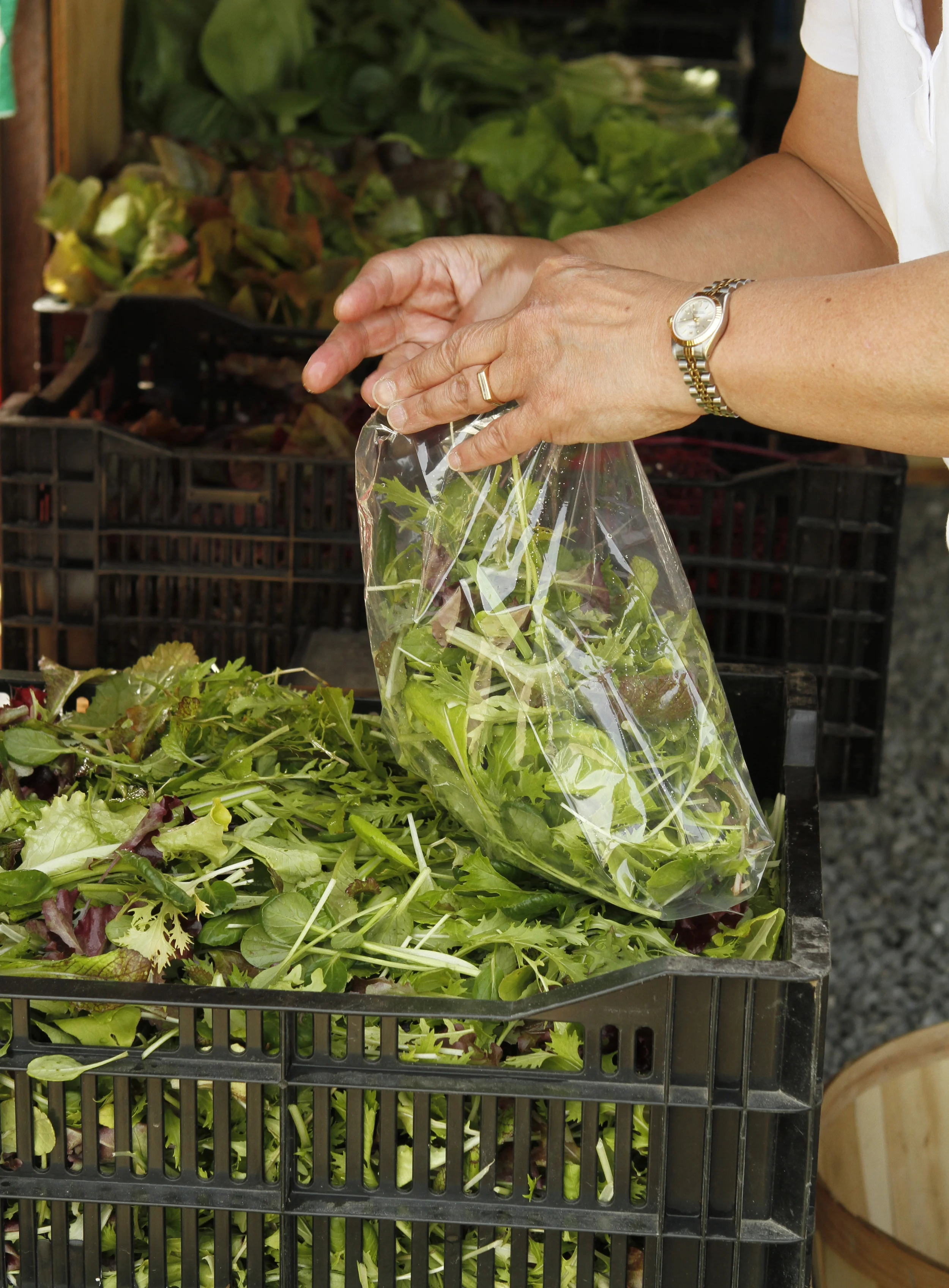It’s easy to take the abundance of luscious greens coming out of the field for granted during the summer, but where do they come from this time of year? The answer is high tunnels. High tunnels are basically greenhouses in which we grow plants directly in the soil. The steel frames are covered with one or two layers of thick plastic and are warmed by passive solar heating. Two of our newest high tunnels here at Jericho Settlers Farm also have in-ground heat supplied by a biomass furnace to keep the greens happy during the coldest winter months. We have nine high tunnels at JSF and thanks to them we can grow fresh salad greens for you all winter here in Vermont.
A lot of farming has to do with timing, and seeding in high tunnels is no exception. During the summer months greens are ready to harvest roughly 20 days from seeding. But when the days start to shorten it can take up to 40 days or more to reach maturity. Seeding just a few days late can make a huge difference in the number of harvests we yield. We seed our high tunnels in late September and early October when there are still more than 10 hours of daylight for optimal germination and plant growth.
Two other important factors involved in winter growing are temperature and moisture. Both need to be monitored closely throughout the winter to ensure that the greens ending up in your salad are fresh and healthy. The plastic that covers our houses helps to trap heat from the sun, which warms the ground and aids plant growth. If it’s warm enough, we open the doors and roll up the sides of the house, which allows for airflow through the houses. On a sunny November day when it's 25 F outside it can be well over 50 F inside a high tunnel if we don't ventilate them. Keeping the plants cool (but not frozen) in the early winter helps them to harden off and be ready for deep winter, plus ventilating prevents dangerous moisture build up in the high tunnels - a precursor to fungal growth which can ruin a crop of winter greens. As the evening approaches and temperatures drop we close up the tunnels and use a lightweight cloth cover, called remay, to blanket over the vulnerable plants. By covering the salad greens and other veggies in our high tunnels we are able to trap heat from the day closer to the ground around the plants. In the morning, we're back out there again to remove the remay, ventilate the crops, and allow the sunlight to penetrate through the house to reheat the ground. Then we recover the crops in the afternoon and do it all over again the next day.
Come late December however, the combination of below freezing temperatures and short day length halts most plant growth. By this time we have harvested most of the salad greens in the unheated high tunnels and they will not regrow again until the longer sunny days of February come around. So this is when our new in-ground heated tunnel comes into real action! By maintaining minimal ground heat (with a biomass furnace) that keeps the plants just above freezing the plants are able to continue a small amount of growth even during the shortest coldest days of winter. This allows us to continue to harvest fresh salad greens through January and February.
We enjoy the change in work and growing challenges that comes along with growing during all the different seasons, even the snowy one!







